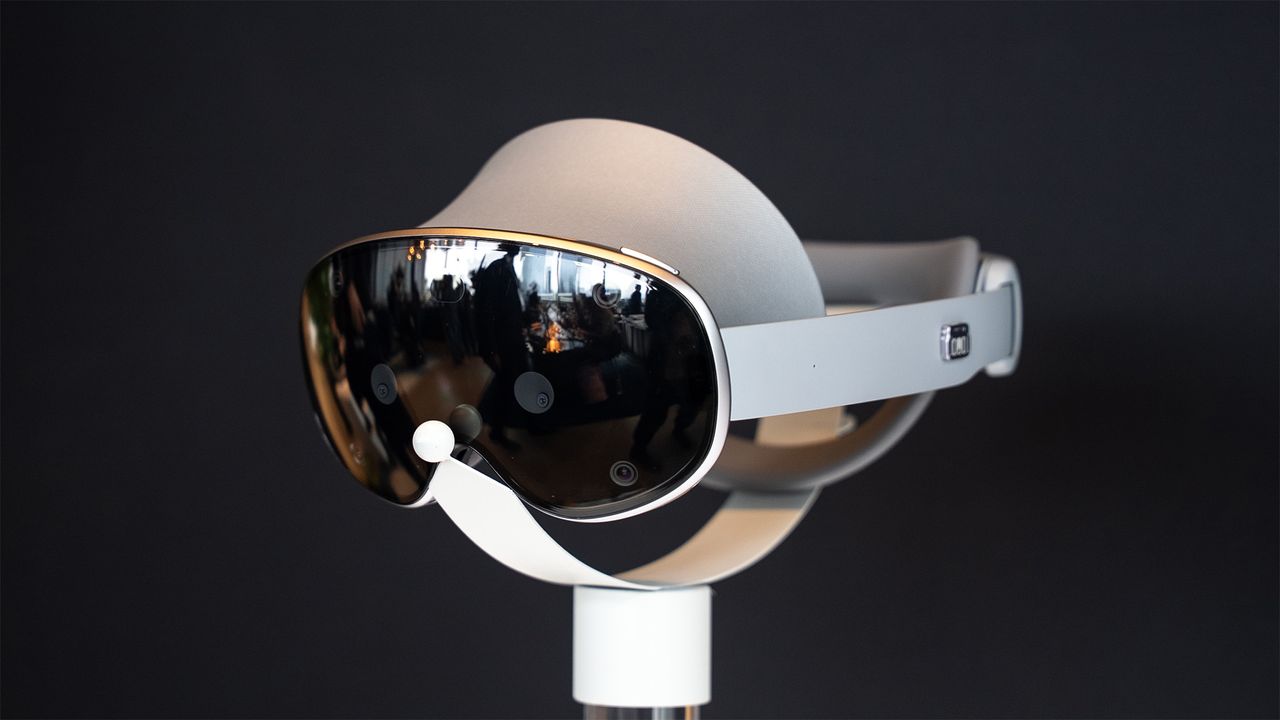
Better for most
Samsung's Galaxy XR is the more practical option of the pricey extended-reality headsets, with a price tag half that of Vision Pro. It still packs impressive specs, with micro-OLED displays and a 4K-per-eye resolution. While performance isn't quite as good, Galaxy XR has the software support advantage, with a full field of Android apps.
Pros
- Android XR platform brings support for a wide variety of Google Play Store apps
- Qualcomm Snapdragon XR2+ Gen 2 is enough to power the headset
- USB-C port for Ethernet connections, accessories, and PC VR use
Cons
- Game controllers aren't included in the box
- No outward-facing display
- Only 256GB of storage
- Still expensive
Impressive hardware
Apple's Vision Pro headset delivers the best performance available in an XR headset, whether you're using the M2 or M5 chips. It has a wide array of sensors, and includes an R1 coprocessor that handles all the inputs from those cameras and sensors. While it's technically impressive, app support is few and far between.
Pros
- Apple M5 chip delivers impressive speeds and enables 120Hz refresh rates
- R1 coprocessor handles input from Vision Pro's 12 cameras and more sensors
- Excellent integration with the Apple ecosystem, with features like Mac Virtual Display
- Up to 1TB storage options
Cons
- Double the price of Galaxy XR
- Weaker app ecosystem
- Heavy, often requires accessories to find a good fit
- FOV feels small with light seal on
The Android XR era is officially here with the debut of Samsung Galaxy XR, the company's first headset developed in collaboration with Google. It's the natural rival to Apple Vision Pro, the innovative, but generally unsuccessful, VR headset priced at a whopping $3,500. It looks like Samsung used Vision Pro as a baseline for Galaxy XR — the headset nearly matches Apple's offering spec-for-spec, even besting it in some categories.
Samsung priced the Galaxy XR at $1,800, almost exactly half the price of the Vision Pro. Naturally, that makes the Samsung Galaxy XR a bit easier for tech enthusiasts to justify. Both are still firmly early-adopter products, regardless, but which one is best? Let's compare all the features and differences between Galaxy XR and Vision Pro.
Samsung Galaxy XR vs. Apple Vision Pro: Design and displays
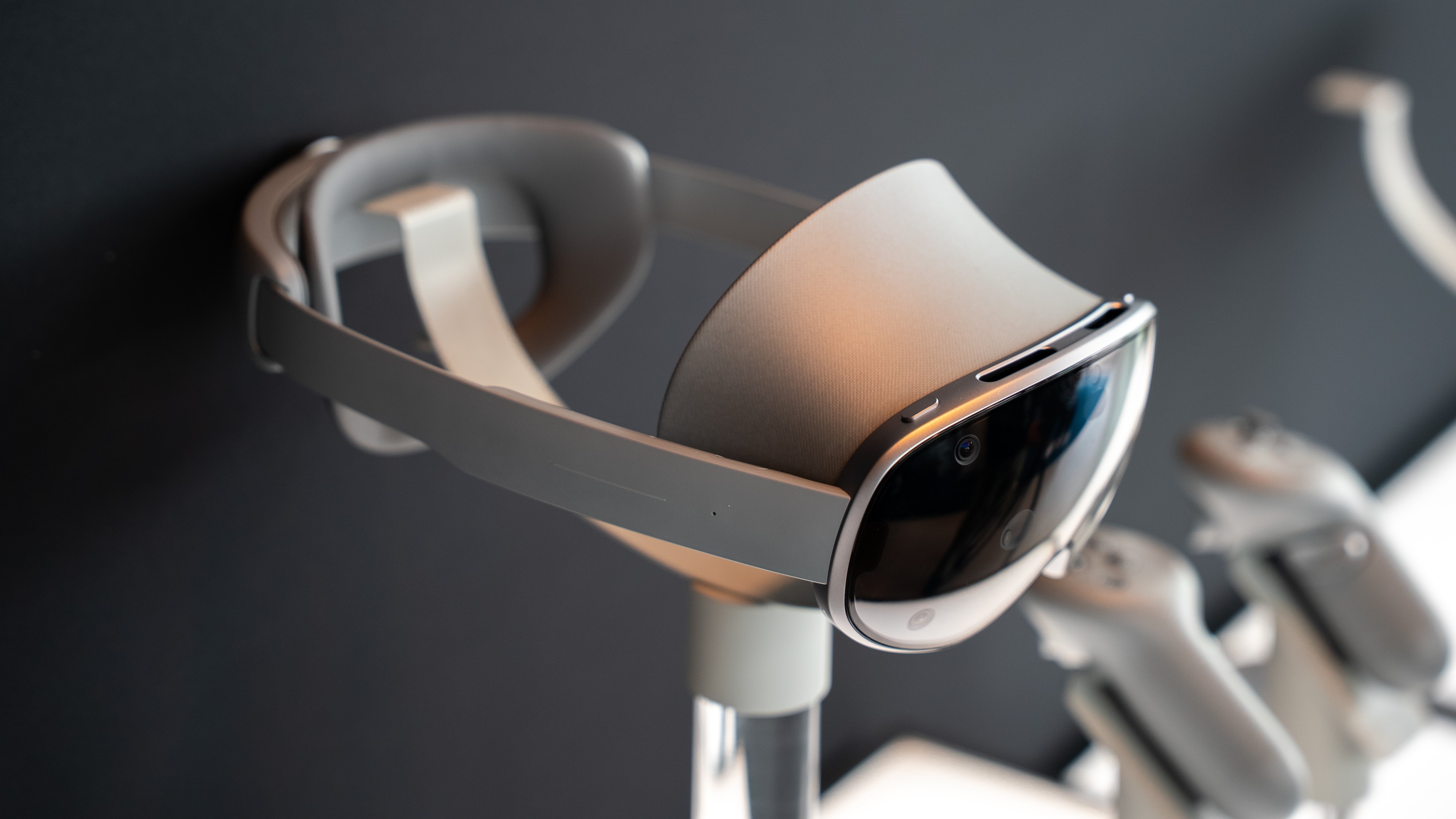
Samsung took notes from the VR headsets that predated the Galaxy XR, and it paid off. Instead of trying to copy one headset, the company picked the best features from Meta Quest Pro and Apple Vision Pro in designing Galaxy XR. The end result is a headset with a striking appearance and the ability to be used with or without light blockers.
By comparison, Vision Pro is designed to be used with its light seal all the time. There are no first-party options for Vision Pro open facial interfaces. If you get creative, third-party accessories and 3D print files can fill the gap. Either way, Vision Pro isn't designed to be used without light seals like Galaxy XR.
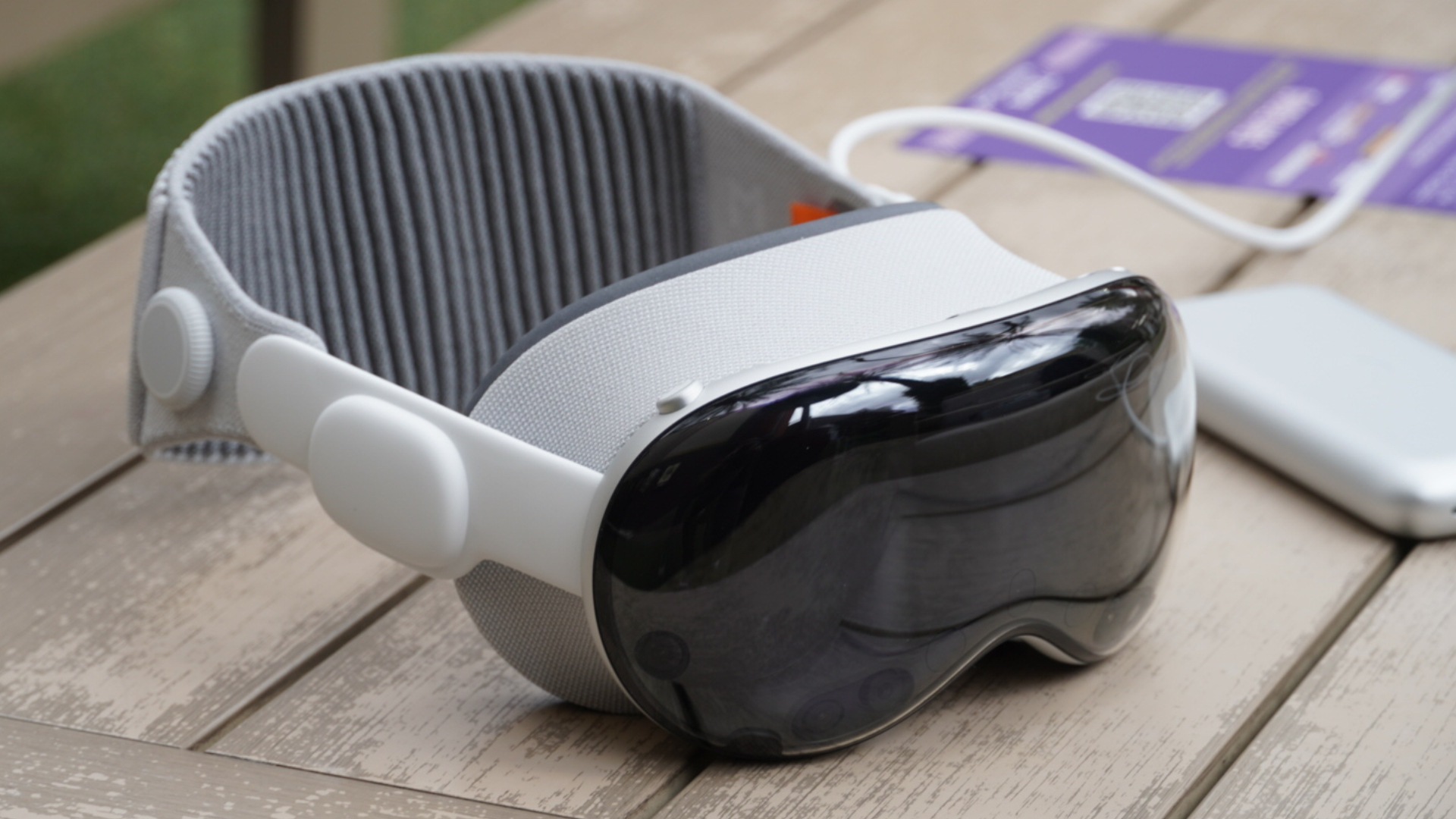
Vision Pro uses a cloth strap, and there are multiple first and third-party straps available. Samsung took a different approach with Galaxy XR, using a rigid strap for better weight distribution and stability.
Apple may have solved its cloth strap issues with a new Dual Knit Band with counterweights for stability, but Samsung's strap design has other benefits. It houses a USB-C port separate from the battery connector for accessory connection.
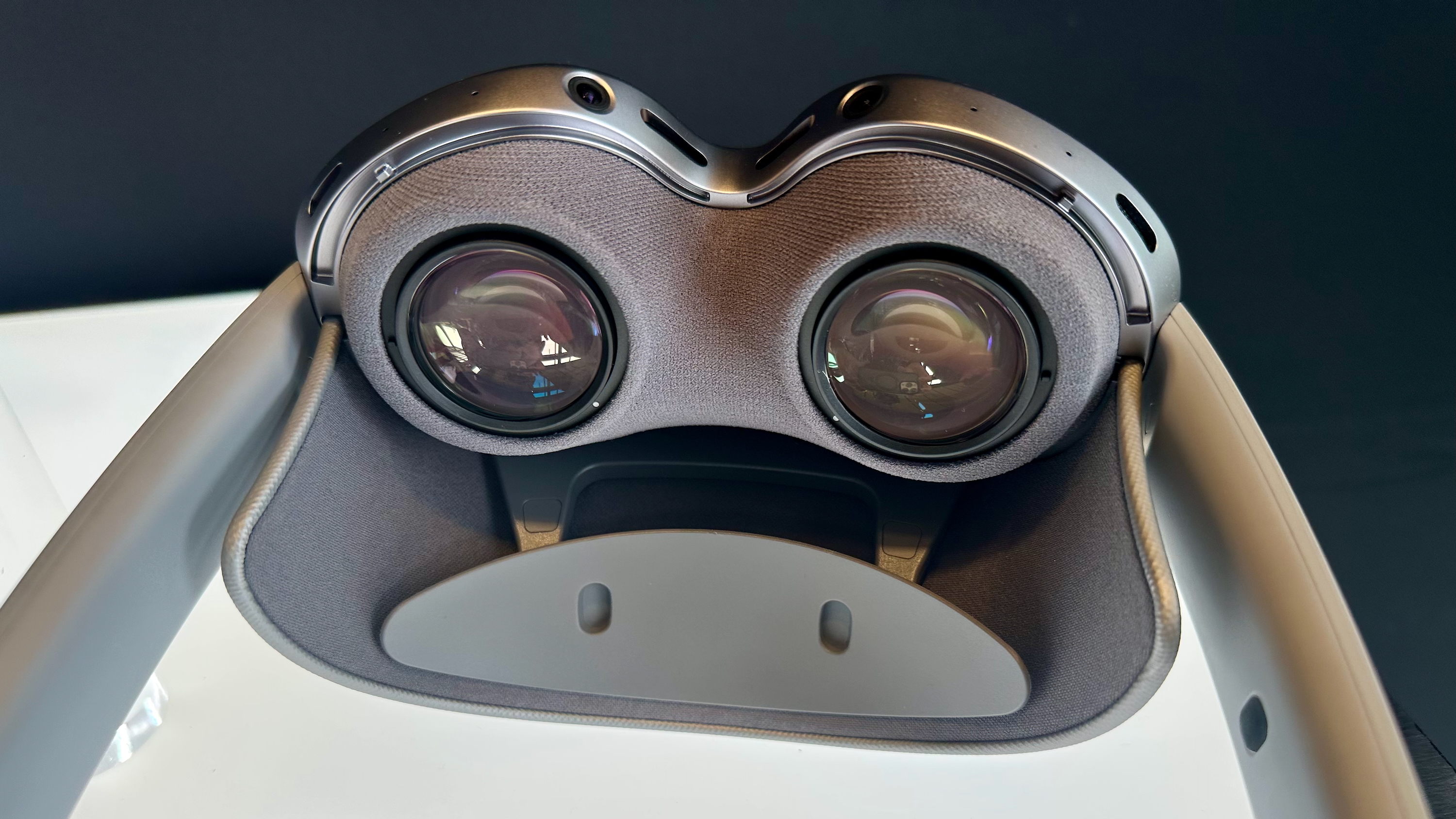
Both Apple Vision Pro and Samsung Galaxy XR have impressive, industry-leading micro-OLED displays. Samsung has a slight edge in quality, with a 3,552 x 3,840 resolution and 96% coverage of the DCI-P3 color gamut.
Apple still offers a resolution of 4K per eye, but only 23 million pixels, compared to Samsung's 29 million. Vision Pro does have the edge in refresh rate, with the latest model topping out at 120Hz. Galaxy XR can only hit 90Hz, and the default setting is 72Hz.
Each headset supports prescription lens inserts for people with vision correction needs. There are no official hardware controllers for Vision Pro, but PlayStation VR controllers are fully supported. Samsung does make controllers for Galaxy XR, although they're sold separately.
Samsung Galaxy XR vs. Apple Vision Pro: Hardware and specs
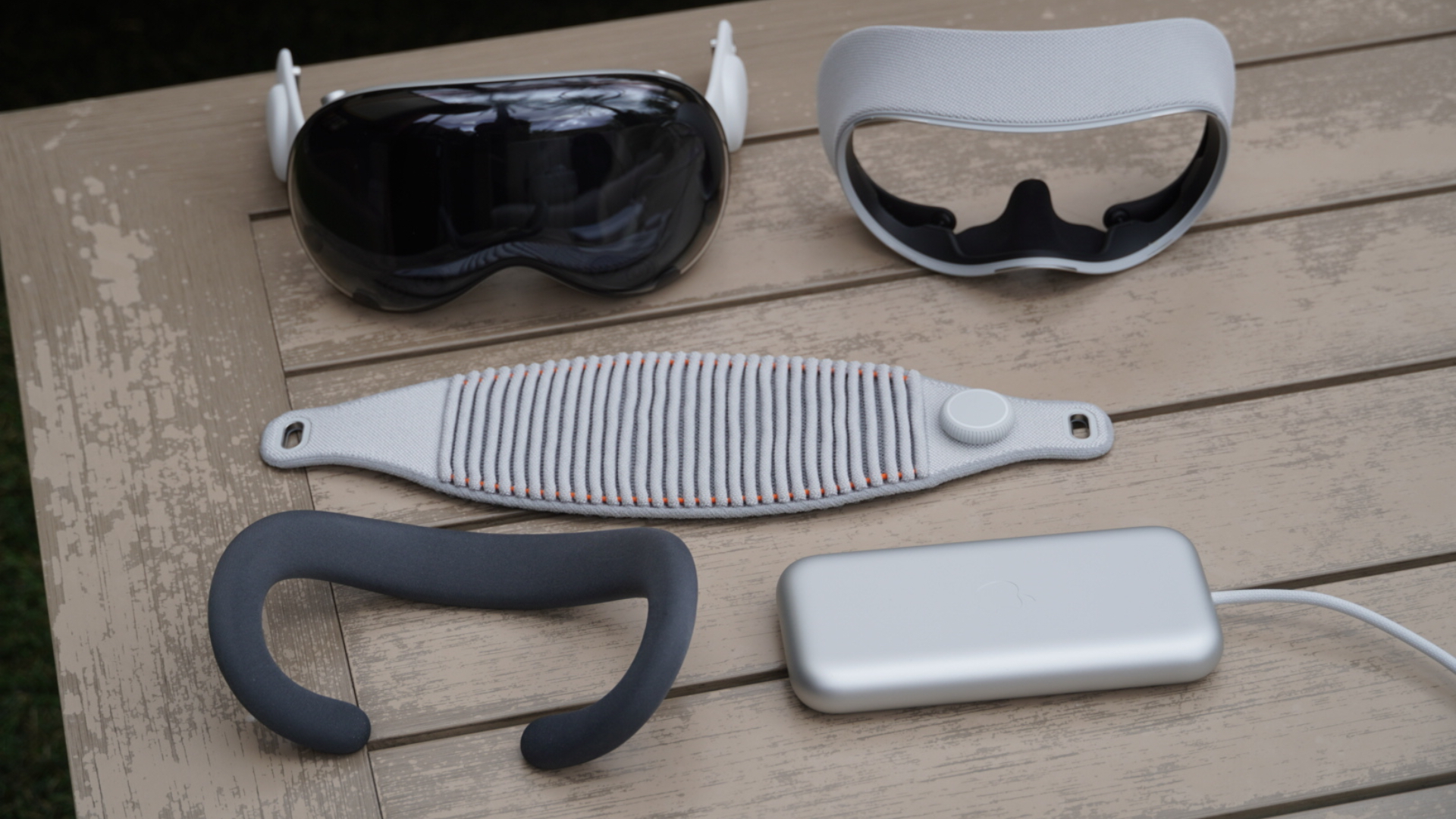
While Samsung has the clear edge in design and displays, Apple has an advantage in performance. The original Vision Pro was a solid performer with the M2 chip, but the latest Apple M5 revision is even better. It adds 120Hz support, hardware-accelerated ray tracing and mesh shading, and better rendering.
In other words, Vision Pro will deliver crisper images with M5 despite using the same display hardware. The headset also uses an Apple R1 co-processor specialized for taking in and processing data from the headset's wide assortment of cameras and sensors.
Meanwhile, the Samsung Galaxy XR is powered by Qualcomm's Snapdragon XR2 Plus Gen 2 processor. It's still a very good chip, bringing a 20% higher CPU frequency and 15% higher GPU frequency than the Snapdragon XR2 Gen 2. The latter powers the Meta Quest 3 and Quest 3S, but the more powerful variant is key to running Galaxy XR smoothly.
Category |
Samsung Galaxy XR |
Apple Vision Pro |
|---|---|---|
Processor |
Snapdragon XR2+ Gen 2 |
Apple M5 (or Apple M2) |
Memory |
16GB RAM; 256GB storage |
Up to 1TB storage |
Display |
3,552 x 3,840, 29 million pixels Micro-OLED; 96% DCI-P3 |
3,660 × 3,200, 23 million pixels, Micro-OLED, 92% DCI-P3 |
Refresh rate |
60Hz, 72Hz (default), 90Hz |
90Hz, 96Hz, 100Hz, or 120Hz |
Field of view |
109ºH; 100ºV |
~100º |
Camera |
6.5MP; 18mm/ F2.0 |
|
Sensors |
Two passthrough cameras; six world-facing tracking cameras; four eye-tracking cameras; five IMUs; one depth sensor; one flicker sensor |
Two high-resolution main cameras (for passthrough); Six tracking cameras on the sides and bottoms (for hand tracking); Four internal tracking cameras (for eye tracking); LiDAR scanner and TrueDepth camera (for depth perception); Four inertial measurement units (IMUs); Flicker sensor; Ambient light sensor |
Mics & speakers |
Six-mic array with beamforming; two dual speakers (Woofer + Tweeter) |
Six-mic array with directional beam forming; Dual-driver audio pods |
Audio codecs |
MP3, AMR-NB/WB, AAC/ AAC+/ eAAC+, Vorbis, FLAC, Opus, Dolby Digital (Plus, Atmos) |
AAC, MP3, Apple Lossless, FLAC, Dolby Digital, Dolby Digital Plus, and Dolby Atmos |
Video |
Resolution: UDH 8K (7,680 x 4,320) @ 60FPS Codecs: H.263, H.264, HEVC, MV-HEVC, MPEG-4, VC-1, VP8, VP9, AV1 |
Codecs: HEVC, MV‑HEVC, H.264, AV1, HDR with Dolby Vision, HDR10, and HLG |
Battery |
2 hours general use, 2.5 hours video watching |
Up to 2.5 hours of general use; 3 hours video watching |
Connectivity |
Wi-Fi 7 (802.11a/b/g/n/ac/ax/be); Bluetooth 5.4 |
Wi‑Fi 6 (802.11ax); Bluetooth 5.3 |
IPD |
54–70mm |
51–75 mm |
Weight |
545g with forehead cushion (not including light shield) Battery weighs 302g |
750–800 grams, including cushion, light seal, and dual knit band Battery weighs 353g |
Samsung sells Galaxy XR in one 256GB storage configuration with 16GB of RAM. Apple offers more storage options, with the headset starting at 256GB and going up to 1TB.
When equipping the Galaxy XR with cameras and sensors, it looks like Samsung took a few cues from Apple Vision Pro. Both headsets feature two passthrough cameras, six world-facing cameras, and four internal eye-tracking sensors. Each one also offers a depth sensor, four inertial measurement units, and a flicker sensor. Apple set the baseline, and Samsung matched it.
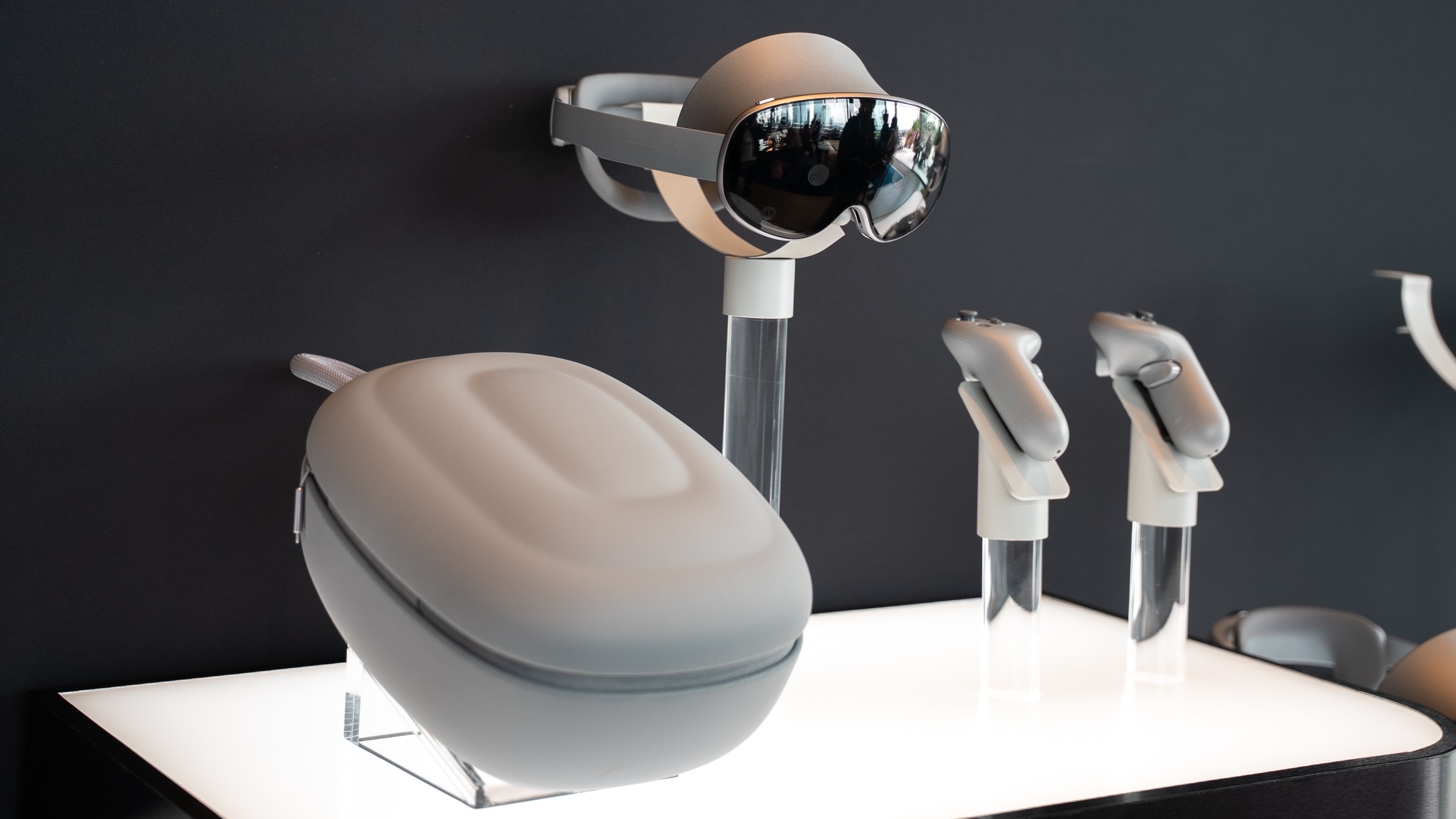
However, Apple still goes a step beyond with a LiDAR scanner and TrueDepth camera. Each headset comes with two open-air speakers for audio playback.
Samsung is the winner in connectivity, supporting Wi-Fi 7 and Bluetooth 5.4 on the Galaxy XR. Apple Vision Pro still only supports Wi-Fi 6 and Bluetooth 5.3. Considering so much on Vision Pro is done wirelessly, it's shocking that the headset still supports such an outdated standard.
Samsung Galaxy XR vs. Apple Vision Pro: Apps and software
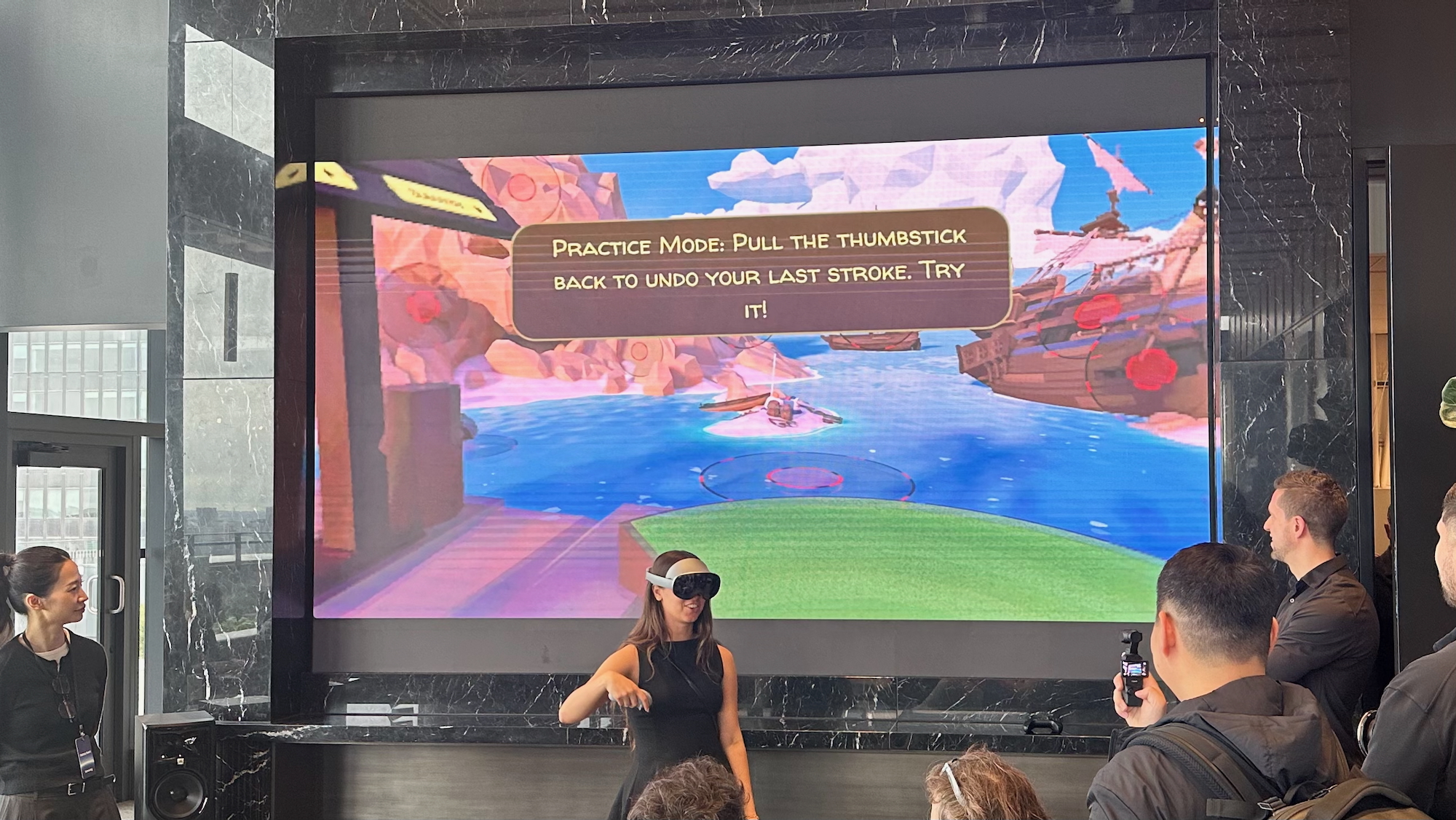
Samsung's Galaxy XR is the first headset to run Android XR, while Apple's Vision Pro runs visionOS 26. Both operating systems aim to leverage the Google and Apple app ecosystems, respectively, to deliver the best experience. Ideally, the Google Play Store and App Store support allows XR headset users to access their favorite apps without developers needing to build for these specific platforms.
In practice, that doesn't work great on Vision Pro. Developers can choose to opt out of the platform, and some big names already have. When an app isn't optimized for Vision Pro, it effectively runs in a virtual iPad-sized window.
There are some things about visionOS that just make sense, like navigation, spatial photos and videos, and widgets that you can place on your real-life walls. However, apps and content explicitly built for Vision Pro feel lacking over a year after its release.

Android XR feels like a winner in app and content support, but it's too early to know for sure. It leverages the Google Play Store ecosystem similarly to Vision Pro, and adds 30 games built specifically for the headset. It can be used with apps like Virtual Desktop for productivity and PC VR applications.
If you're still craving more, the Samsung Galaxy XR's onboard USB-C port can take in display data from basically any source, turning the headset into a virtual monitor.
Samsung Galaxy XR vs. Apple Vision Pro: Which should you buy?
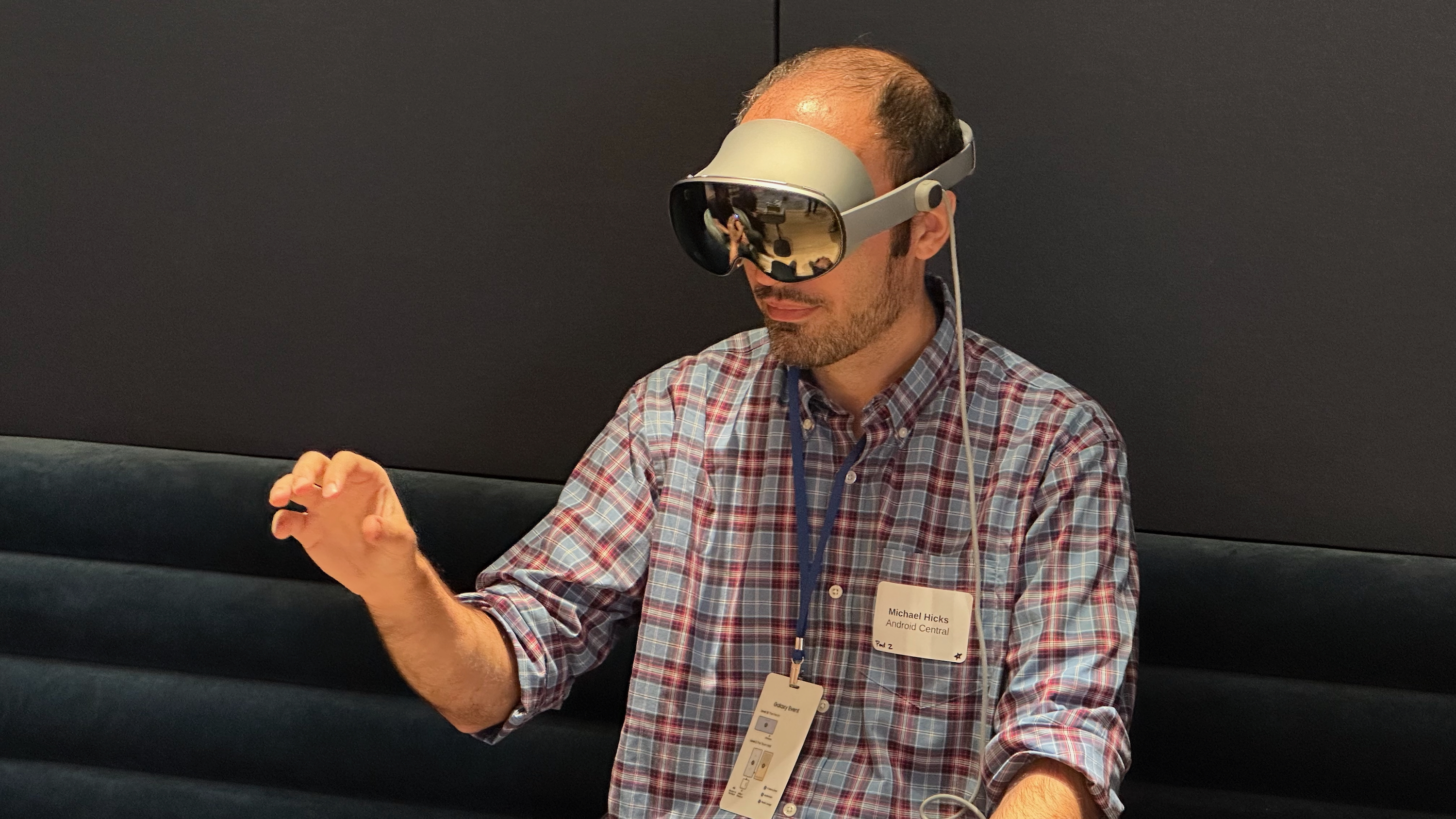
Of the two headsets, Samsung's Galaxy XR will provide a better experience today than Apple Vision Pro. It's also a better value, costing about half the price of Vision Pro while delivering similar hardware. When you consider all the perks you get if you buy Galaxy XR before 2026 — a year of Google AI Pro, YouTube Premium, NBA League Pass, and more — the headset becomes a pretty solid deal.
There are a few aspects of Vision Pro that exceed Galaxy XR's capability. Notably, the headset is powered by the Apple M5 chip, which can run laps around the Snapdragon processor in Galaxy XR. That enables real-world perks, like 120Hz refresh rates. However, it feels like the visionOS app ecosystem isn't ready to utilize the Vision Pro's hardware advantages.
For now, the Samsung Galaxy XR is the extended-reality headset to buy if you want next-generation hardware and a great app ecosystem. It's still a tough sell, much like Vision Pro, because of its price. There are cheaper options available now, such as the Meta Quest 3 or Quest 3S, and the price of premium headsets will surely come down over time.
For early adopters
Despite being half the price of Vision Pro and bringing a better software experience, Samsung Galaxy XR is still an early-adopter product. It's just the start of a world of upcoming Android XR products, which will undoubtedly get cheaper over time.
Hard to recommend
Apple Vision Pro is still an impressive piece of technology begging for a purpose as we head into 2026. It's nice that the M5 chip improves performance, and visionOS 26 brings a few welcomed features. However, key drawbacks like weight and FOV still need to be addressed. At $3,500, you should pass.







